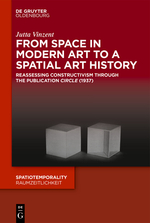Solidarity protest at University of
Erfurt
Against CAA and police brutality on
protesting students in India
By Sanam Roohi
On Friday, 20 December 2019 some 40 people
including students of University of Erfurt and Fachhochschule Erfurt, members
of the Max Weber Kolleg, and other concerned citizens and students from
Thuringia gathered in solidarity with the protestors and students of different
universities and educational institutes who were protesting against the discriminatory
Citizenship Amendment Act (CAA) 2019 and were met with brutal police violence
on 15 December 2019. Those gathered unequivocally condemned the highhandedness
of the government of India and this police brutality on protesters, in the
spirit of solidarity with the students and protestors in India.
Why protest CAA?
The Citizenship (Amendment) Bill 2019
was passed by the two houses of Indian Parliament and became an Act on 12
December 2019. The Act amends the existing Citizenship Act of 1955 to
explicitly make ‘illegal’ migrants from Pakistan, Afghanistan and Bangladesh belonging
to Hindu, Sikh, Buddhist, Jain, Parsi, and Christian religions who came to
India prior to 2014 as eligible for Indian citizenship. It ostensibly leaves
out of its purview persecuted Muslims from these countries, the Rohingyas from
Myanmar and Tamils from Sri Lanka. The Act is highly discriminatory and
arbitrary at best, violating secular ideals of the Indian constitution. Yet, if
taken together with NRC or National Register of Citizen, it will be devastating
for the social fabric of the country.
What is NRC?
India’s Home Minister Amit Shah has
reiterated time and again that the Citizenship Amendment will be followed by
the nationwide implementation of NRC by 2024 to throw out ‘infiltrators’ or
illegal immigrants. Once adopted, every person living in India will have to
prove with documents that they are a citizen of the country to have their names
included in this register. If they do not have requisite documents, they will
be deemed living illegally and stripped of their citizenship and thrown in
detention camps. We learn this from the limited enrolment of NRC in the North
East Indian state of Assam between February 2015 and August 2019 after which
almost 1.9 million people failed to get their name registered in the NRC and
many were put in camps.
Many poor citizens in India do not have
proper documents like birth certificate and because many have not finished
school, they do not have their school leaving certificates too. Not only will
NRC be an administrative nightmare for the bureaucracy it will create
unparalleled fear among Indian citizens. While Hindus too can be excluded from
the NRC, the Citizenship amendment act indicates that Hindus will get
citizenship even if they are illegal or without documents. But Muslims, unable
to prove their citizenship will be deemed illegal!
Taken together with the anti-Muslim
sentiments prevalent in India since the ruling right-wing Bharatiya Janata
Party came to power in 2014 and again in 2019, it has created a lot of fear among
the Muslim citizens of the country.
Protests and police brutality
The passing of the bill to an Act was
followed by widespread protests from Indian citizens who argued that it goes
against the principle of secularism enshrined in the Indian constitution and
the Fundamental Rights guaranteed to everyone irrespective of their religion. Students
joined in the protest at some universities – prominent among them were Jamia
Milia Islamia University in Delhi and Aligarh Muslim University in Aligarh,
Uttar Pradesh. On the night of 15 December, the police stormed into these
university campuses, entered canteens, girls and boys hostels, prayer rooms and
libraries and physically assaulted students, including those who were not
protesting, to instil fear. Students were flushed out and campuses were vacated
in the middle of the night, some were arrested and the whereabouts of a few
Aligarh students is unknown. These incidents of police brutality inspired other
universities across India and abroad to join in the protest. Apart from
attacking university spaces, the police in large parts of central and Western
Uttar Pradesh, Mangalore in Karnataka and Assam opened fire killing more than
30 people, most of them in the state of Uttar Pradesh within 24 hours between
20-21 December 2019. The state government also arrested more than a thousand
protestors to instil fear.
Despite police brutality, the protests
have not stopped but spread from one city to another in the last one and a half
months. These protests are unprecedented in the history of independent India. It
is for the first time Muslim women, many of them wearing hijab have come out to
the streets to protest in large numbers, joined in sizeable numbers by
anti-right groups, left organisations, student bodies, lawyers groups, Sikh community
members and ordinary citizens who stand against the CAA and NRC. Shaheenbagh area
in Delhi has become a symbol of this non-violent resistance of the current
right-wing government. Women of Shaheenbagh have come out to protest against
the CAA and NRC and have shown exemplary spirit in taking care of each other in
turns as others sit out to protest. Women of other cities like Kolkata and
Mumbai have followed suit.
Meanwhile, the government has not only
continued with the CAA, it has also started rolling out NRC in Uttar Pradesh
and in Karnataka.


